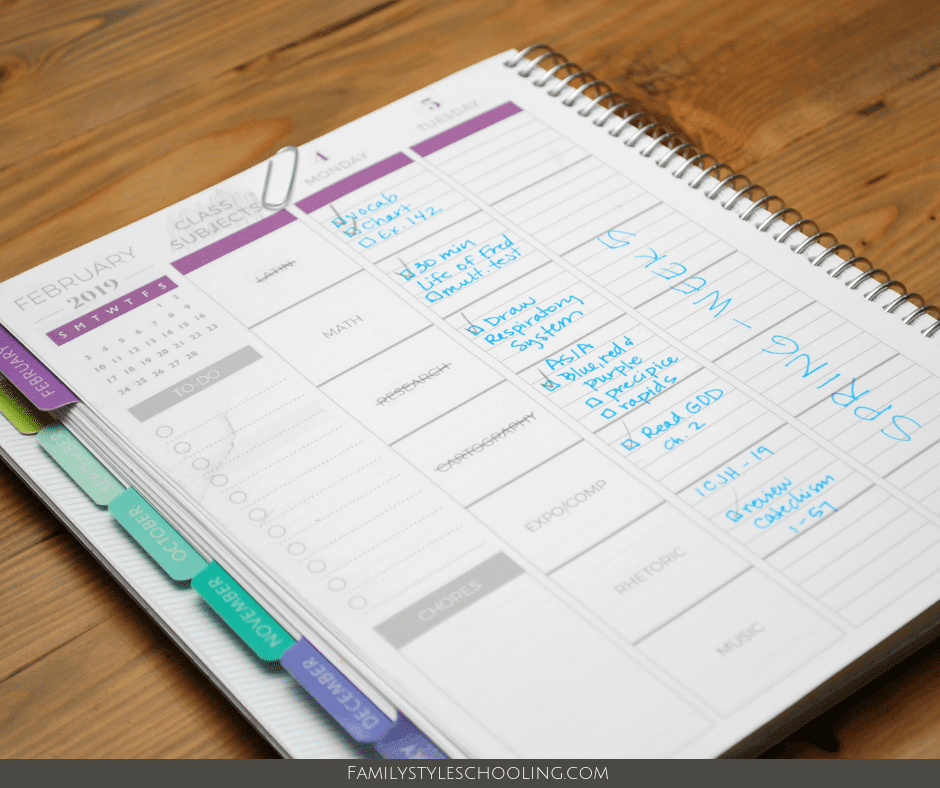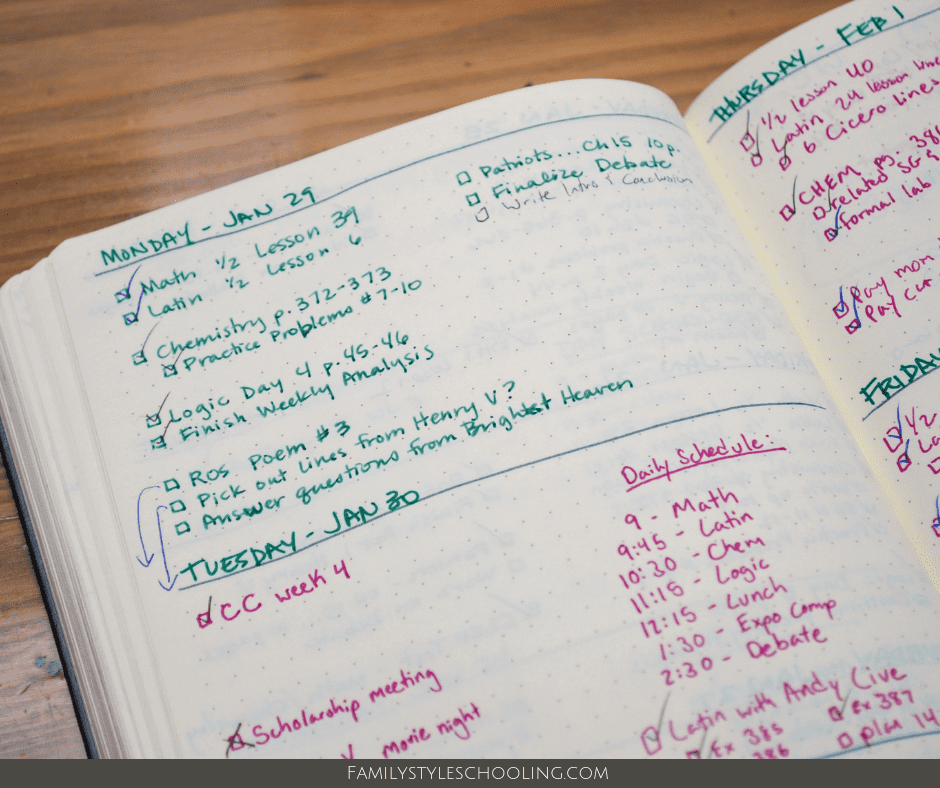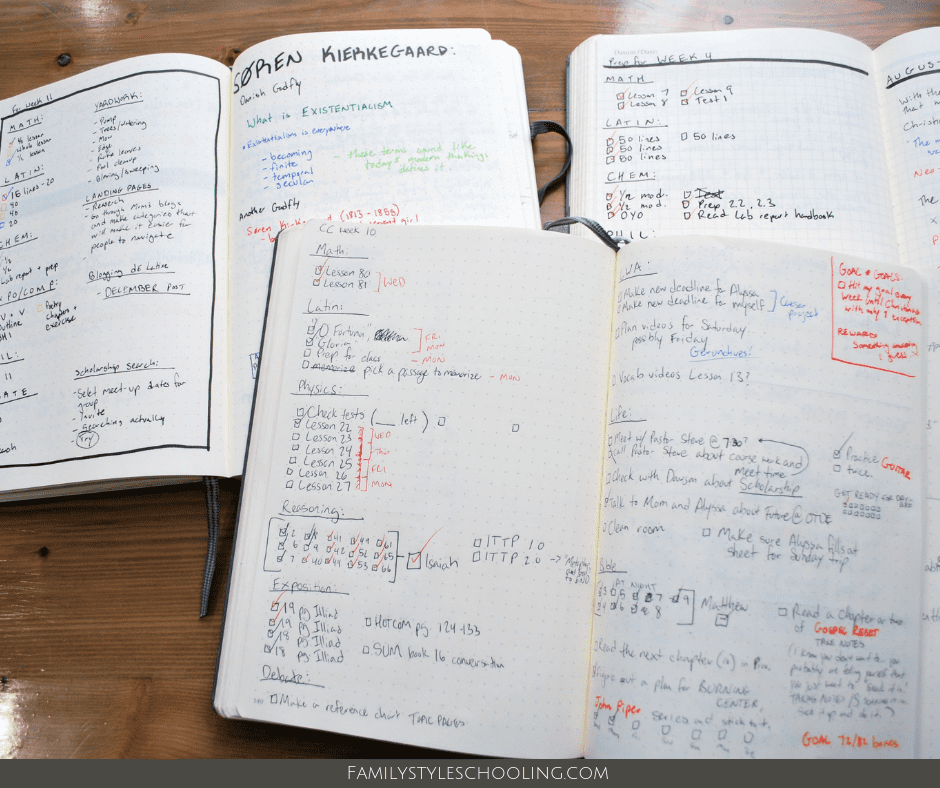Planning Through the Years – Tips From a High School Senior
by Andy Strauss
After a convicting missions conference, I, now a high school senior in my final semester of high school, stood praying, attempting to listen to God, and begging him to spontaneously reveal word for word His plan for my life. While I have had an idea of the vocation God wants me to pursue, I felt unsure and impatient. Wrapped up in the emotion of the moment, I said: “God, I’m ready. Just tell me what you want me to do with my life.” And softly the words came, whispering to me like a breath of fresh air. “Finish your senior thesis first.” I laughed. Of course, God didn’t need me to know every detail of my future in order to adequately serve him. He wanted me to love him by taking the present one step at a time.

In light of this experience, It seemed important to examine the history of my planning life, and give ideas on ways to maximize efficiency, relieve stress, and ultimately take the present one step at a time.
The Bumper Method
Ever since Challenge A, my mom has been training me in the art of planning my week of school work. Over the years, my planning has definitely changed, but that doesn’t necessarily mean for the better or worse. Each year has had a new set of challenges to overcome, and, consequently, a new plan. My first method of attack, used in my 7th grade year, I am going to call the “bumper” method. Basically, this method is like bowling with the bumper wall that keeps your ball from falling pitifully into the gutter. And hey, there are no rules in the world of planning that say that using this method counts as cheating.

Mom bought me a planner with nearly all the details printed out for me: room for six subject rows, and a column for each day of the week. All I had to do was fill in what I wanted to do each day. This helped me to not only visually see my tasks for the week, but also allowed me to break for the day after I had finished my daily assignments.
The Belaying Method
The second planning method I attempted I am calling the “belaying” method. This method allows you to freely climb the rock wall by yourself, but there is still someone on the other end of your rope keeping you from falling to the bottom. Enter stage right: the bullet journal. A bullet journal is a blank notebook reserved for taking notes, writing down phone numbers, (occasionally personalizing with doodles), and of course, planning your week. All together, the journal allows you to plan for your schoolwork and your life on the same page.

My first attempts at effectively applying a bullet journal to my plan began in Challenge 1, or my 9th grade year. Every week on Tuesday nights I would brain dump. Considering the upcoming week, I would write down every piece of school work (I found that writing lesson 1, lesson 2, and lesson 3, made me feel more productive than just writing ‘math’) into my journal. Then I would draw in a check-box next to each task. However, I color-coded the check-boxes (I don’t remember how I came up with that idea) to each color of the rainbow. The first color, red, stood for the first day of my school week: Wednesday. Orange stood for Thursday, yellow for Friday, and so on.

One thing I would like to note is that there are many pages in journal of planning (most prominent in my 10th grade year) that are not in my handwriting. They are in mom’s handwriting. It wasn’t that I had trouble writing or understanding my assignments for the week. I needed moral support and a healthy serving of advice. A student is never too old to ask for help!

The Strict-Planting Method
Over time as my school work and overall life began to change, my plan began to lack effectiveness. If planning is an art, my art began to languish. Incidentally, these were the weeks I found myself most overwhelmed. Writing this blog post does not mean I am an expert planner! There were weeks when my plan consisted of either furiously scribbled pencil markings that could probably be taken for cave drawings or Hebrew, or nothing whatsoever. It was only recently that a new strategy formed.
This method I am calling the “Strict-Planting” method. I borrowed this term off of a guitar teacher of mine. The concept of strict-planting is that while you are playing a note on your guitar you are at the same moment preparing your open fingers to play the next note. This seems like an obvious thing to do. Not so! And why can this idea not be applied to our planning lives as well? With this idea in mind, I realized that most of my struggle did not come from knowing what I had to do over the week, but when to do it. The stress did not conquer my castle if I made the focus of my plan the time of the day, instead of the day itself.

Vertically, I wrote out every hour of the day in columns at the top of the page. My first row on the left consisted of the days of the week. Because of the layout on the page, I forced myself to not only include what I was doing per day, but also to “strict-plant” my assignments by scheduling how long I planned on doing that assignment. Surely everyone has spent at least one three-to-four hour period on math alone. Whatever subject it is, this amount of time tends to kill your brainpower and thus your productive day! After applying this method, I found that I actually had free-time in the evenings. A few focused hours can save you several stressed ones!

As I said earlier, none of these methods are better or worse than the others (excluding the cave-man scribbling). These are just some tips from a High School senior. Whatever method you use, use it to its full potential! Even if writing out a plan means taking an hour or two out of your morning, you will find it worth it! No sane general in the army rides into battle because he feels like a strategy would be a waste of time. No one purposely avoids checking their nearly empty gas level before driving because they think it won’t save themselves quite a bit of trouble in the near future. God isn’t asking you to write a hour-by-hour plan of your entire existence. That’s His job. He requires you to honor Him by taking the present one step at a time.
Hi, I’m Andy! I am an Ouachita Baptist University grad who writes stories, teaches languages, and makes music in between. The puzzle and mystery of languages fascinate me and inspire me to dig deeper in my studies. I love to learn and experience God’s creation and share what I have found with others.


This is such a great reminder that we need to be flexible through the years, what works one year may not the next. My challenge II student discovered the Pomodoro timing method for her studies. Basically work 25 mins, 5 min break, work 25 mins, 5 min break, work 25 mins, then 25 min break…
She has found taking scheduled breaks help her accomplish more and finds she has more free time. There are even apps to use for this timing. Grateful to her amazing director for introducing her to this.
Thank you Andy for all your Latin videos. Enjoy your Senior year.
That is a great idea! Im glad it is working for your student. Thank you for your encouragement as well. I am still learning ways to be efficient in my studies!
You know, I read this post, and I was amazed at the thought of the bullet journal! But, I’m the type of person who would start that, and at the end of the year, it would be a half empty book of scribbles and doodles, and only the first page filled with actual planning. I’m wondering how to start that, but actually FOLLOW THROUGH with it… I also love the idea of color coding the DAY! I usually just go day, by day and color code the subjects.
I’m going into Challenge 1 later this year, and wondering how to be organized (unlike the past two years of challenge!)
Thanks Andy for all the Latin help!!